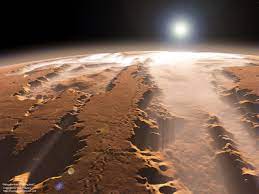
Breaking News
 The Fed's Pivot: The Return of Easy Money and the Inflation Storm Ahead
The Fed's Pivot: The Return of Easy Money and the Inflation Storm Ahead
 This One-Person eVTOL Will Soon Offer Bird's-eye Views of Las Vegas
This One-Person eVTOL Will Soon Offer Bird's-eye Views of Las Vegas
 Emergency Update: Steve Slepcevic Reports Live on Hurricane Melissa's Devastation in Jamaica
Emergency Update: Steve Slepcevic Reports Live on Hurricane Melissa's Devastation in Jamaica
Top Tech News
 Graphene Dream Becomes a Reality as Miracle Material Enters Production for Better Chips, Batteries
Graphene Dream Becomes a Reality as Miracle Material Enters Production for Better Chips, Batteries
 Virtual Fencing May Allow Thousands More Cattle to Be Ranched on Land Rather Than in Barns
Virtual Fencing May Allow Thousands More Cattle to Be Ranched on Land Rather Than in Barns
 Prominent Personalities Sign Letter Seeking Ban On 'Development Of Superintelligence'
Prominent Personalities Sign Letter Seeking Ban On 'Development Of Superintelligence'
 Why 'Mirror Life' Is Causing Some Genetic Scientists To Freak Out
Why 'Mirror Life' Is Causing Some Genetic Scientists To Freak Out
 Retina e-paper promises screens 'visually indistinguishable from reality'
Retina e-paper promises screens 'visually indistinguishable from reality'
 Scientists baffled as interstellar visitor appears to reverse thrust before vanishing behind the sun
Scientists baffled as interstellar visitor appears to reverse thrust before vanishing behind the sun
 Future of Satellite of Direct to Cellphone
Future of Satellite of Direct to Cellphone
 Amazon goes nuclear with new modular reactor plant
Amazon goes nuclear with new modular reactor plant
 China Is Making 800-Mile EV Batteries. Here's Why America Can't Have Them
China Is Making 800-Mile EV Batteries. Here's Why America Can't Have Them
Huge supply of subterranean water discovered in Mars' Grand Canyon

The Trace Gas Orbiter (TGO) has detected an area about the size of the Netherlands where water could make up as much as 40 percent of the material near the surface.
While Mars is believed to have once held huge oceans on its surface, today it's drier than any Earthly desert. But there likely is still water on the Red Planet – mostly around the poles as ice, or potentially in salty liquid lakes deep underground, although the evidence is mixed on the latter idea.
Closer to the equator, smaller amounts of water have been detected in the soil near the surface, in the form of either ice or hydrated minerals. But the newly discovered cache is far bigger – and far wetter – than anything else found so far.

 Handicapped America
Handicapped America China Innovates: Transforming Sand into Paper
China Innovates: Transforming Sand into Paper

